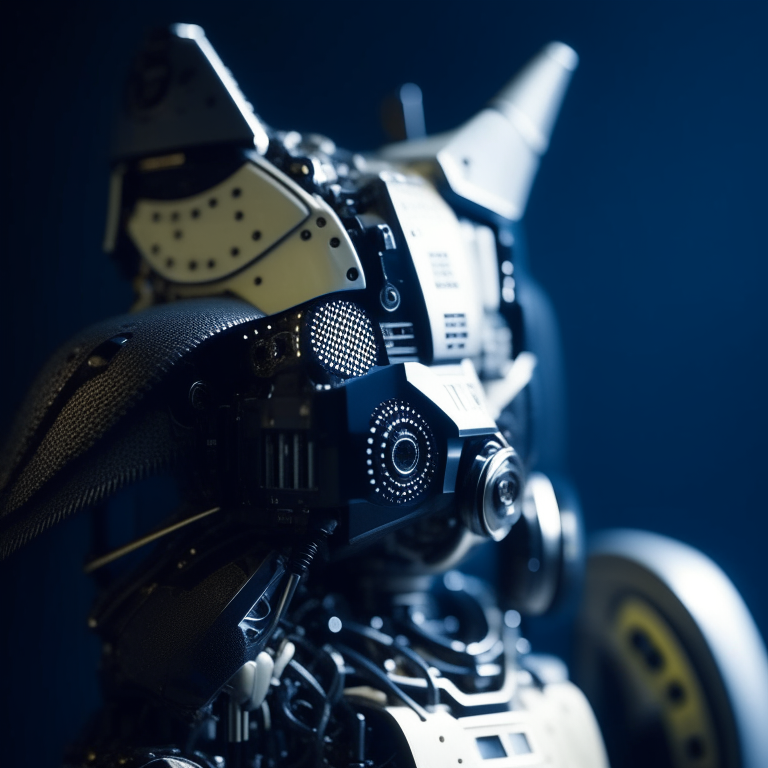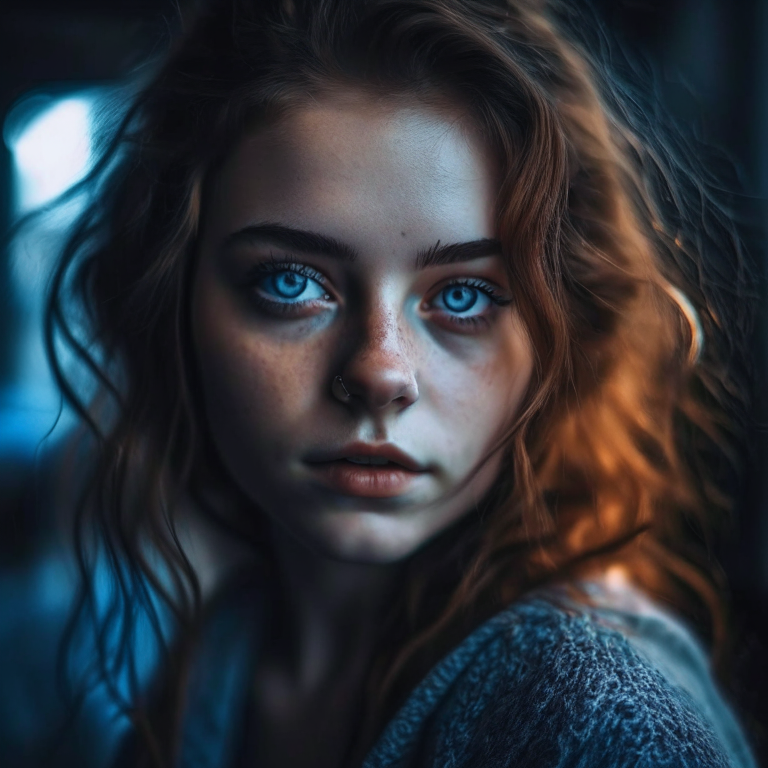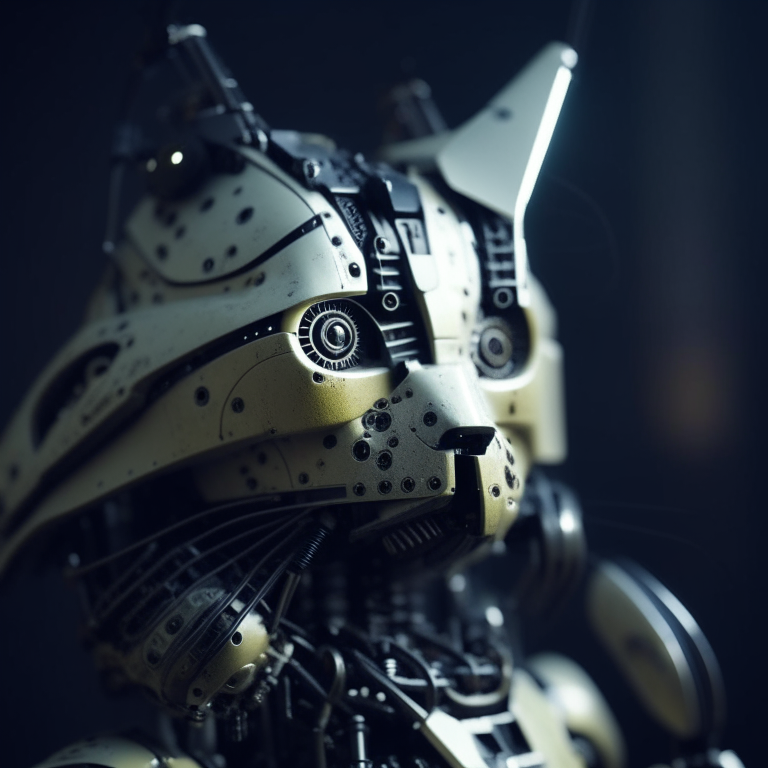Spaces:
Runtime error
Kandinsky 2.2
The Kandinsky 2.2 release includes robust new text-to-image models that support text-to-image generation, image-to-image generation, image interpolation, and text-guided image inpainting. The general workflow to perform these tasks using Kandinsky 2.2 is the same as in Kandinsky 2.1. First, you will need to use a prior pipeline to generate image embeddings based on your text prompt, and then use one of the image decoding pipelines to generate the output image. The only difference is that in Kandinsky 2.2, all of the decoding pipelines no longer accept the prompt input, and the image generation process is conditioned with only image_embeds and negative_image_embeds.
Same as with Kandinsky 2.1, the easiest way to perform text-to-image generation is to use the combined Kandinsky pipeline. This process is exactly the same as Kandinsky 2.1. All you need to do is to replace the Kandinsky 2.1 checkpoint with 2.2.
from diffusers import AutoPipelineForText2Image
import torch
pipe = AutoPipelineForText2Image.from_pretrained("kandinsky-community/kandinsky-2-2-decoder", torch_dtype=torch.float16)
pipe.enable_model_cpu_offload()
prompt = "A alien cheeseburger creature eating itself, claymation, cinematic, moody lighting"
negative_prompt = "low quality, bad quality"
image = pipe(prompt=prompt, negative_prompt=negative_prompt, prior_guidance_scale =1.0, height=768, width=768).images[0]
Now, let's look at an example where we take separate steps to run the prior pipeline and text-to-image pipeline. This way, we can understand what's happening under the hood and how Kandinsky 2.2 differs from Kandinsky 2.1.
First, let's create the prior pipeline and text-to-image pipeline with Kandinsky 2.2 checkpoints.
from diffusers import DiffusionPipeline
import torch
pipe_prior = DiffusionPipeline.from_pretrained("kandinsky-community/kandinsky-2-2-prior", torch_dtype=torch.float16)
pipe_prior.to("cuda")
t2i_pipe = DiffusionPipeline.from_pretrained("kandinsky-community/kandinsky-2-2-decoder", torch_dtype=torch.float16)
t2i_pipe.to("cuda")
You can then use pipe_prior to generate image embeddings.
prompt = "portrait of a women, blue eyes, cinematic"
negative_prompt = "low quality, bad quality"
image_embeds, negative_image_embeds = pipe_prior(prompt, guidance_scale=1.0).to_tuple()
Now you can pass these embeddings to the text-to-image pipeline. When using Kandinsky 2.2 you don't need to pass the prompt (but you do with the previous version, Kandinsky 2.1).
image = t2i_pipe(image_embeds=image_embeds, negative_image_embeds=negative_image_embeds, height=768, width=768).images[
0
]
image.save("portrait.png")
We used the text-to-image pipeline as an example, but the same process applies to all decoding pipelines in Kandinsky 2.2. For more information, please refer to our API section for each pipeline.
Text-to-Image Generation with ControlNet Conditioning
In the following, we give a simple example of how to use [KandinskyV22ControlnetPipeline] to add control to the text-to-image generation with a depth image.
First, let's take an image and extract its depth map.
from diffusers.utils import load_image
img = load_image(
"https://huggingface.co/datasets/hf-internal-testing/diffusers-images/resolve/main/kandinskyv22/cat.png"
).resize((768, 768))
We can use the depth-estimation pipeline from transformers to process the image and retrieve its depth map.
import torch
import numpy as np
from transformers import pipeline
from diffusers.utils import load_image
def make_hint(image, depth_estimator):
image = depth_estimator(image)["depth"]
image = np.array(image)
image = image[:, :, None]
image = np.concatenate([image, image, image], axis=2)
detected_map = torch.from_numpy(image).float() / 255.0
hint = detected_map.permute(2, 0, 1)
return hint
depth_estimator = pipeline("depth-estimation")
hint = make_hint(img, depth_estimator).unsqueeze(0).half().to("cuda")
Now, we load the prior pipeline and the text-to-image controlnet pipeline
from diffusers import KandinskyV22PriorPipeline, KandinskyV22ControlnetPipeline
pipe_prior = KandinskyV22PriorPipeline.from_pretrained(
"kandinsky-community/kandinsky-2-2-prior", torch_dtype=torch.float16
)
pipe_prior = pipe_prior.to("cuda")
pipe = KandinskyV22ControlnetPipeline.from_pretrained(
"kandinsky-community/kandinsky-2-2-controlnet-depth", torch_dtype=torch.float16
)
pipe = pipe.to("cuda")
We pass the prompt and negative prompt through the prior to generate image embeddings
prompt = "A robot, 4k photo"
negative_prior_prompt = "lowres, text, error, cropped, worst quality, low quality, jpeg artifacts, ugly, duplicate, morbid, mutilated, out of frame, extra fingers, mutated hands, poorly drawn hands, poorly drawn face, mutation, deformed, blurry, dehydrated, bad anatomy, bad proportions, extra limbs, cloned face, disfigured, gross proportions, malformed limbs, missing arms, missing legs, extra arms, extra legs, fused fingers, too many fingers, long neck, username, watermark, signature"
generator = torch.Generator(device="cuda").manual_seed(43)
image_emb, zero_image_emb = pipe_prior(
prompt=prompt, negative_prompt=negative_prior_prompt, generator=generator
).to_tuple()
Now we can pass the image embeddings and the depth image we extracted to the controlnet pipeline. With Kandinsky 2.2, only prior pipelines accept prompt input. You do not need to pass the prompt to the controlnet pipeline.
images = pipe(
image_embeds=image_emb,
negative_image_embeds=zero_image_emb,
hint=hint,
num_inference_steps=50,
generator=generator,
height=768,
width=768,
).images
images[0].save("robot_cat.png")
The output image looks as follow:

Image-to-Image Generation with ControlNet Conditioning
Kandinsky 2.2 also includes a [KandinskyV22ControlnetImg2ImgPipeline] that will allow you to add control to the image generation process with both the image and its depth map. This pipeline works really well with [KandinskyV22PriorEmb2EmbPipeline], which generates image embeddings based on both a text prompt and an image.
For our robot cat example, we will pass the prompt and cat image together to the prior pipeline to generate an image embedding. We will then use that image embedding and the depth map of the cat to further control the image generation process.
We can use the same cat image and its depth map from the last example.
import torch
import numpy as np
from diffusers import KandinskyV22PriorEmb2EmbPipeline, KandinskyV22ControlnetImg2ImgPipeline
from diffusers.utils import load_image
from transformers import pipeline
img = load_image(
"https://huggingface.co/datasets/hf-internal-testing/diffusers-images/resolve/main" "/kandinskyv22/cat.png"
).resize((768, 768))
def make_hint(image, depth_estimator):
image = depth_estimator(image)["depth"]
image = np.array(image)
image = image[:, :, None]
image = np.concatenate([image, image, image], axis=2)
detected_map = torch.from_numpy(image).float() / 255.0
hint = detected_map.permute(2, 0, 1)
return hint
depth_estimator = pipeline("depth-estimation")
hint = make_hint(img, depth_estimator).unsqueeze(0).half().to("cuda")
pipe_prior = KandinskyV22PriorEmb2EmbPipeline.from_pretrained(
"kandinsky-community/kandinsky-2-2-prior", torch_dtype=torch.float16
)
pipe_prior = pipe_prior.to("cuda")
pipe = KandinskyV22ControlnetImg2ImgPipeline.from_pretrained(
"kandinsky-community/kandinsky-2-2-controlnet-depth", torch_dtype=torch.float16
)
pipe = pipe.to("cuda")
prompt = "A robot, 4k photo"
negative_prior_prompt = "lowres, text, error, cropped, worst quality, low quality, jpeg artifacts, ugly, duplicate, morbid, mutilated, out of frame, extra fingers, mutated hands, poorly drawn hands, poorly drawn face, mutation, deformed, blurry, dehydrated, bad anatomy, bad proportions, extra limbs, cloned face, disfigured, gross proportions, malformed limbs, missing arms, missing legs, extra arms, extra legs, fused fingers, too many fingers, long neck, username, watermark, signature"
generator = torch.Generator(device="cuda").manual_seed(43)
# run prior pipeline
img_emb = pipe_prior(prompt=prompt, image=img, strength=0.85, generator=generator)
negative_emb = pipe_prior(prompt=negative_prior_prompt, image=img, strength=1, generator=generator)
# run controlnet img2img pipeline
images = pipe(
image=img,
strength=0.5,
image_embeds=img_emb.image_embeds,
negative_image_embeds=negative_emb.image_embeds,
hint=hint,
num_inference_steps=50,
generator=generator,
height=768,
width=768,
).images
images[0].save("robot_cat.png")
Here is the output. Compared with the output from our text-to-image controlnet example, it kept a lot more cat facial details from the original image and worked into the robot style we asked for.
Optimization
Running Kandinsky in inference requires running both a first prior pipeline: [KandinskyPriorPipeline]
and a second image decoding pipeline which is one of [KandinskyPipeline], [KandinskyImg2ImgPipeline], or [KandinskyInpaintPipeline].
The bulk of the computation time will always be the second image decoding pipeline, so when looking into optimizing the model, one should look into the second image decoding pipeline.
When running with PyTorch < 2.0, we strongly recommend making use of xformers
to speed-up the optimization. This can be done by simply running:
from diffusers import DiffusionPipeline
import torch
t2i_pipe = DiffusionPipeline.from_pretrained("kandinsky-community/kandinsky-2-1", torch_dtype=torch.float16)
t2i_pipe.enable_xformers_memory_efficient_attention()
When running on PyTorch >= 2.0, PyTorch's SDPA attention will automatically be used. For more information on PyTorch's SDPA, feel free to have a look at this blog post.
To have explicit control , you can also manually set the pipeline to use PyTorch's 2.0 efficient attention:
from diffusers.models.attention_processor import AttnAddedKVProcessor2_0
t2i_pipe.unet.set_attn_processor(AttnAddedKVProcessor2_0())
The slowest and most memory intense attention processor is the default AttnAddedKVProcessor processor.
We do not recommend using it except for testing purposes or cases where very high determistic behaviour is desired.
You can set it with:
from diffusers.models.attention_processor import AttnAddedKVProcessor
t2i_pipe.unet.set_attn_processor(AttnAddedKVProcessor())
With PyTorch >= 2.0, you can also use Kandinsky with torch.compile which depending
on your hardware can signficantly speed-up your inference time once the model is compiled.
To use Kandinsksy with torch.compile, you can do:
t2i_pipe.unet.to(memory_format=torch.channels_last)
t2i_pipe.unet = torch.compile(t2i_pipe.unet, mode="reduce-overhead", fullgraph=True)
After compilation you should see a very fast inference time. For more information, feel free to have a look at Our PyTorch 2.0 benchmark.
To generate images directly from a single pipeline, you can use [KandinskyV22CombinedPipeline], [KandinskyV22Img2ImgCombinedPipeline], [KandinskyV22InpaintCombinedPipeline].
These combined pipelines wrap the [KandinskyV22PriorPipeline] and [KandinskyV22Pipeline], [KandinskyV22Img2ImgPipeline], [KandinskyV22InpaintPipeline] respectively into a single
pipeline for a simpler user experience
Available Pipelines:
| Pipeline | Tasks |
|---|---|
| pipeline_kandinsky2_2.py | Text-to-Image Generation |
| pipeline_kandinsky2_2_combined.py | End-to-end Text-to-Image, image-to-image, Inpainting Generation |
| pipeline_kandinsky2_2_inpaint.py | Image-Guided Image Generation |
| pipeline_kandinsky2_2_img2img.py | Image-Guided Image Generation |
| pipeline_kandinsky2_2_controlnet.py | Image-Guided Image Generation |
| pipeline_kandinsky2_2_controlnet_img2img.py | Image-Guided Image Generation |
KandinskyV22Pipeline
[[autodoc]] KandinskyV22Pipeline - all - call
KandinskyV22ControlnetPipeline
[[autodoc]] KandinskyV22ControlnetPipeline - all - call
KandinskyV22ControlnetImg2ImgPipeline
[[autodoc]] KandinskyV22ControlnetImg2ImgPipeline - all - call
KandinskyV22Img2ImgPipeline
[[autodoc]] KandinskyV22Img2ImgPipeline - all - call
KandinskyV22InpaintPipeline
[[autodoc]] KandinskyV22InpaintPipeline - all - call
KandinskyV22PriorPipeline
[[autodoc]] KandinskyV22PriorPipeline - all - call - interpolate
KandinskyV22PriorEmb2EmbPipeline
[[autodoc]] KandinskyV22PriorEmb2EmbPipeline - all - call - interpolate
KandinskyV22CombinedPipeline
[[autodoc]] KandinskyV22CombinedPipeline - all - call
KandinskyV22Img2ImgCombinedPipeline
[[autodoc]] KandinskyV22Img2ImgCombinedPipeline - all - call
KandinskyV22InpaintCombinedPipeline
[[autodoc]] KandinskyV22InpaintCombinedPipeline - all - call


